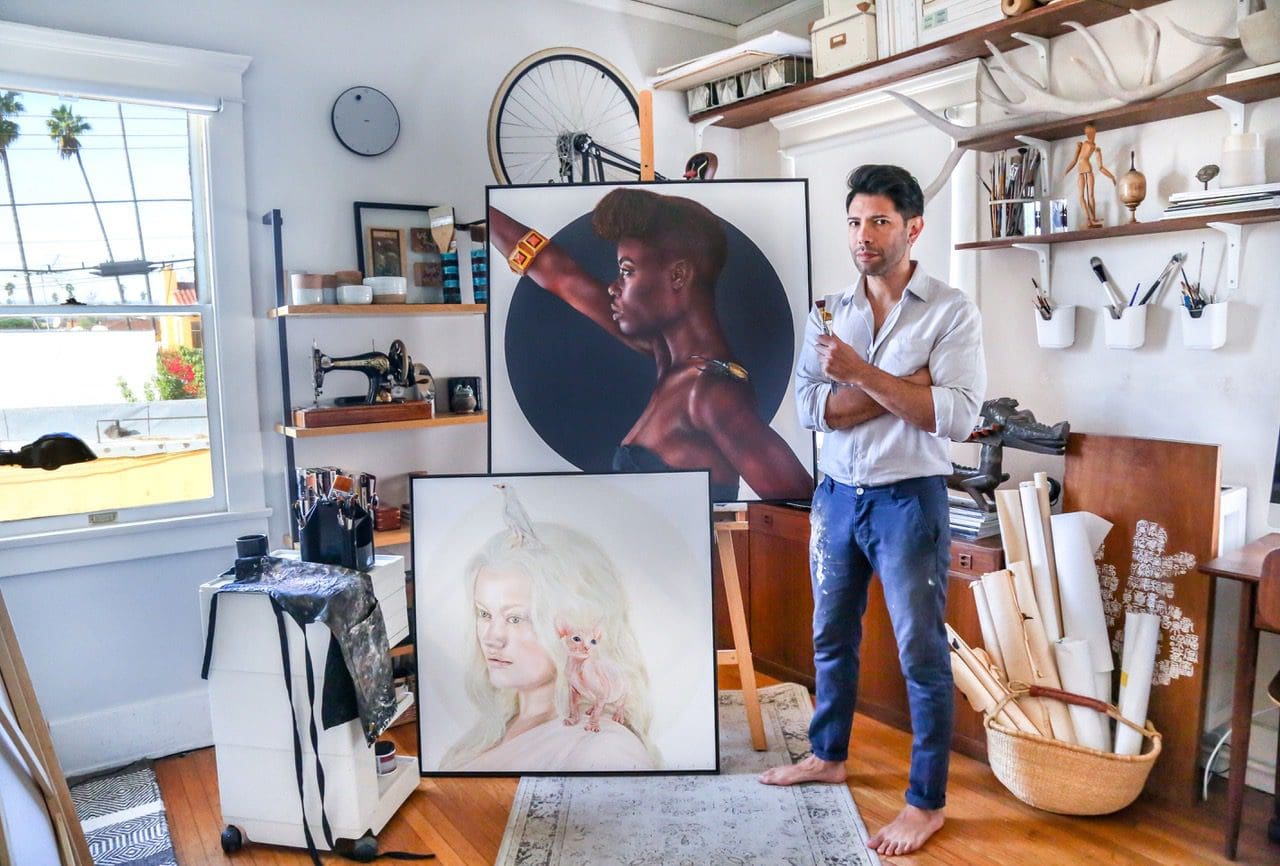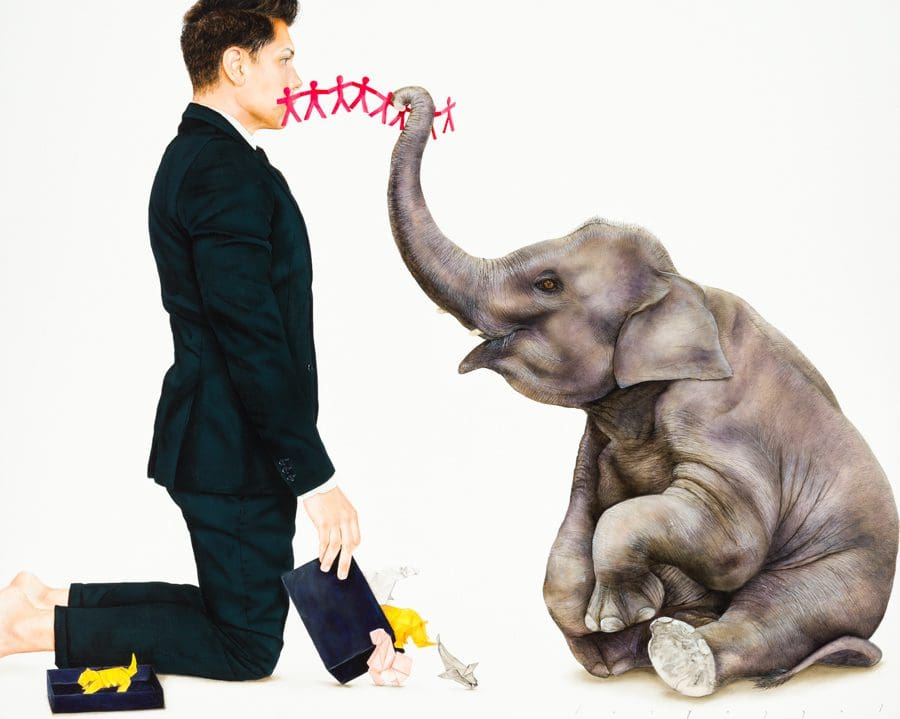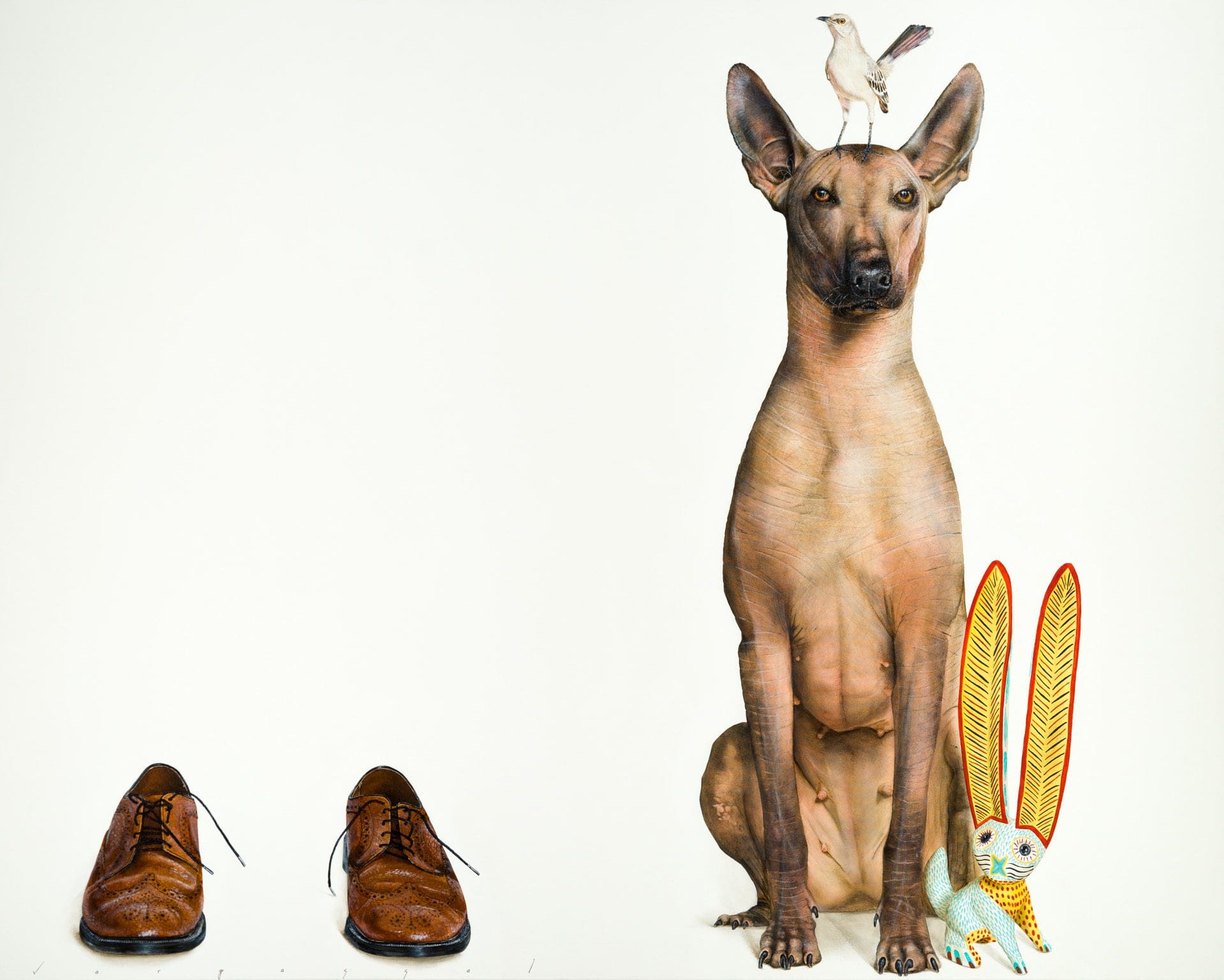Los Angeles based artist Ariel Vargassal paints scenes of humans and animals to create metaphors for social issues, and to emphasize the connection between humanity and nature. Though Vargassal takes on serious subjects, the curious juxtapositions in his work keep it fun and whimsical. Inspired by the mural art of his Mexican heritage, each of his detailed minimalist paintings tells its own story.
Learn more about Vargassal’s background and process, along with the “New Essentialist” philosophy that influences his work.
“Through my work you can see a story that makes you smile, makes you feel good, tells you something.”– Ariel Vargassal

Describe your creative process
AV: Usually it begins with an idea. Sometimes the idea comes from having a conversation with a friend, reading a book, or listening to a song—just something that pops into my head—and then I develop the idea further.
Some of my work is very light, and some is social commentary. It’s very important to me to not disguise the issue, but to make it more accessible to people, so they can have an aesthetic experience with my painting versus a specific subject. I’m not an aggressive person, and I don’t want my work to be aggressive. Even when the paintings have heavier social commentary, I still want to find a way to make them whimsical and fun.
Once I have a developed idea, I start sketching the composition and decide how I want to use the animals and the subject matter to tell the story.

Animals appear often in your work. Can you explain their significance to you?
AV: I’ve been fascinated by the way humans have used animals since early times. Sometimes we use them as a reference for our own personal experiences, like spiritual guidance, or we treat them as babies—they are products in our society.
I am fascinated by the interaction between humans and animals, and I wanted to explore it more and use the animals as a metaphor. I also use them as an extension of what’s happening to the human, and it makes the narrative complete. The animals can transmit the emotions easier than a human.

Tell us about your background. When did you start creating art?
AV: I started when I was little. I’ve always painted and done sculptures. At first I wanted to be an architect, and I went to school for architecture, but I dropped out after only one semester. Then I joined the fine arts school and I graduated with a BFA from the University of Mexico. So I have been creating art since a young age. It’s been a long process for me.
Your work is hyperrealistic. What interests you about realism?
AV: I have always loved figurative work. It’s something that visually attracts me and makes me excited to paint. I think figurative work has a very distinctive way of telling stories. At some point my work transitioned from just figurative into photorealism just because I wanted to challenge myself, and I wanted to paint animals. Painting animals can be very tricky; it can turn out tacky. Through photorealism I could render the animals and the people to be more appealing and aesthetically pleasing to the eye.

How many hours does it take for you to create one painting?
AV: I spend between 120–150 hours creating a work once I start painting. Sometimes it takes longer because the ideas have to develop, but even just putting the work on the canvas takes a long time. Especially when I have to do animals with fur and human flesh—all the details.
What’s your favorite thing to do when you’re not painting?
AV: I love to cook, and I like to taste wine. I like to spend time with my dog, hang around the house, hang out with my friends. I’m a very chill person. I like to travel, but mostly I enjoy cooking and relaxing—I’m very simple in that way.

What do you hope viewers see in your work?
AV: I want them to see what they want to see, but I also want it to bring people a smile, especially nowadays. We need a lighter place to live. When you open your tablet and read the news, everything is so negative. There is a lot of anger going around and we are more divisive, and it’s pulling us apart. Through my work you can see a story that makes you smile, makes you feel good, tells you something. Sometimes it’s very deep, and sometimes it’s a simple metaphor, but I want people to have a full experience when they see the painting.
I’ve developed this philosophy which I call “New Essentialism,” which means I like to paint only what’s necessary to tell the story. I want to paint only the elements that are there for a purpose. That’s why sometimes I don’t paint backgrounds—I don’t need backgrounds to tell the story. I only need the animals and the people. Sometimes I don’t even need faces because I want to leave it more open for the human expression. I only paint what is essential.
Stop by the gallery nearest to you to see Ariel Vargassal’s work in person.

